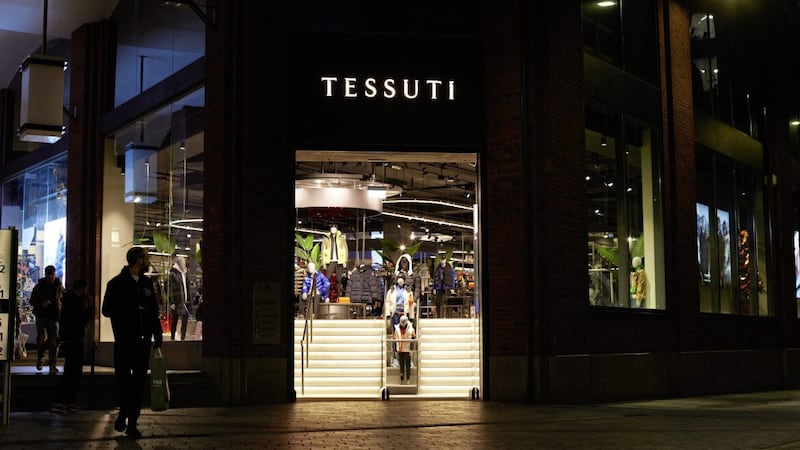A charity behind plans for a major housing project on the former Mackies site in west Belfast has revealed a number of social housing associations have expressed interest in the development.
Take Back the City, a coalition of families, housing charities, planners and architects, has formally entered the planning process for its proposal to develop 750 homes on the former industrial site in the Springfield Road area.
Their ambitious plan includes proposals for a city farm, allotments and the provision of hydro-electric energy and water-source heat generation from the Forth River.
Community space, shops and new footbridge also feature in the plan.
The charity does not own the land, nor does it have the necessary finance in place. But Take Back the City say its proposal can get the ball rolling on a scheme that could help address significant housing shortages in the west and north of the city.
Chloë Trew, who has submitted the proposal of application notice (PAN) to Belfast City Council, is director of Participation and the Practice of Rights (PPR).
She said a number of housing associations have already reached out since the application was lodged two weeks ago.
A PAN, which is required for all major developments, involves a consultation process ahead of the submission of a full planning application.

“We’ve been campaigning for improved housing conditions and increased social housing for quite a long time now,” said the rights campaigner.
“We were really interested in proposing a solution at least, in terms of recognising the amount of need that there is, particularly in north and west Belfast around social housing.
“It was around ten years ago that our families started mapping out land to see what might be available in terms of putting together a plan for social housing.”
Take Back the City said the proposal is a first of its kind in the UK or Ireland.
The 24-acre site next to the Innovation Factory has multiple owners, including Invest NI, Belfast City Council, Braidwater Homes and the Department for Communities.
The charity said its plans would incorporate the new £6 million EU-funded Forth Meadow Community Greenway.
Chloë Trew said while the coalition does not have the capital to develop a project on such a scale, its strategy of drawing focus to the housing need and formulating a detailed proposal, is yielding results.
“I understand a number of housing associations have expressed an interest and the Housing Executive has asked to meet us to discuss it,” she said.
“One of the things we wanted to do was to demonstrate what the possibilities would be, but also to show that we are not building social housing to either the scale or speed or in the right places.”

According to official figures, of the 5,378 new dwellings completed in Northern Ireland during 2023, just 570 were classed as social housing.
A total of 5,779 new dwellings were started last year, including 825 homes for social use.
The latest available government figures show there were 47,312 applicants for social housing in the north at the end of March 2024.
The total is made up of applicants who have no existing tenancy with the Housing Executive or a housing association.
Around 75% (35,464) were considered to be in ‘housing stress’.
“We’re willing to work with any kind of partner in terms of developing it,” said Chloë.
“They [housing associations] are able to raise the capital funding to develop the site, but I imagine it won’t be one housing association doing it in one phase, but probably lots of people.”
Sustainability measures and the inclusion of green space are also integral to the proposal.
In an unusual move, a city farm is proposed next to Springfield Primary School.
“When we first started developing the plan, we actually worked with a group of homeless families and in particular, a group of homeless young people.
“We developed a concept or set of principles we would use when developing the site more broadly,” said Chloë.
Alongside the recognition of housing need, those principles include a recognition of the impact of climate change, the need to access green spaces and even grow food.
“We’re trying to say we can balance these difference needs, between the housing need, between the sustainability idea and enabling people to access green space.
“This is a population of people affected by the cost of living crisis, by food poverty, so one of the principles we wanted architects to respond to was to provide that element.”
A public event staffed by the development team, which will enable interested parties to view the proposal in detail and provide feedback, is due to take place at the Forthspring Inter Community Centre on September 10.
“We’re just a really small charity,” added Chloë.
“We’re trying to make a difference and if they were able to match our energy levels and our investment with their own resources, then we might be able to move forward a bit more quickly.”

